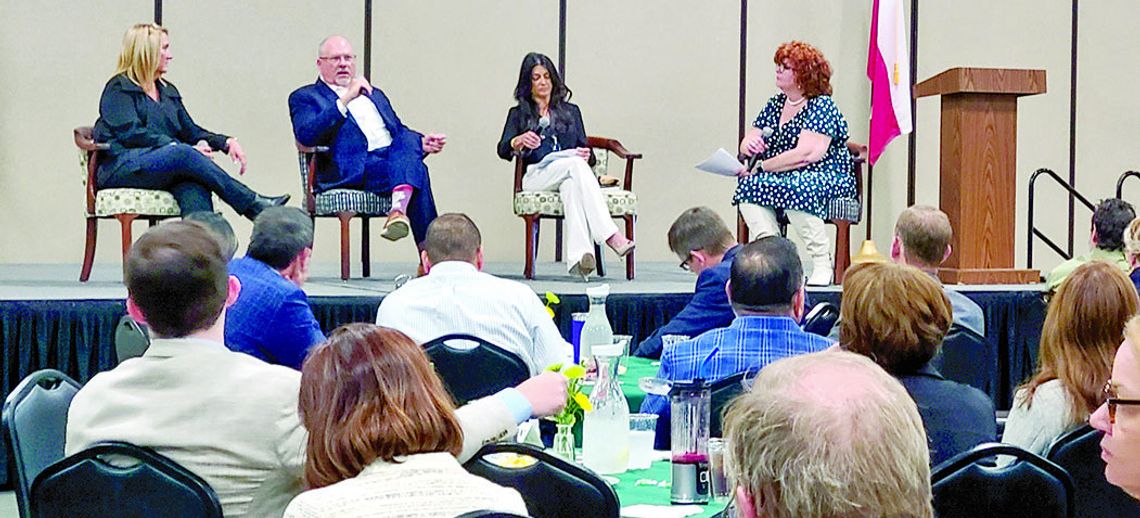It may take a village to raise a child, but it apparently takes a collaboration of villages to raise a workforce, based on expert opinions at the Taylor Chamber of Commerce Gear Up For Growth Symposium April 23. The symposium featured panelists focused on how educational institutions can work with businesses and community partners to ensure graduating students can access high-paying career paths.
“If we can’t get this education and workforce development piece right, we have let down our community,” said Tia Rae Stone, chamber president.
Stone moderated the panel, joined by Temple College Vice President of Workforce Development DeDe Griffith, Rural Capital Area Workforce Solutions CEO Paul Fletcher and public education advocate Jodi Duron.
Stone said her research found a living wage for a single person in Taylor is $23 an hour, and higher for a person with children.
Thanks to recent growth in the area, more high-paying jobs are being created. The challenge, according to the panelists, is to ensure local students graduate from high school ready to take advantage of all opportunities available.
“If you graduate from high school and you never get another certification after high school, you’re 70% more likely to never get out of poverty,” Fletcher said. “I think it’s criminal that we have kids that leave high school and don’t have a plan on what they’re gonna do next.”
Fletcher said the answer is educating students as soon as possible to be thinking about the lifestyle they want and making decisions that lead to them achieving that vision.
“It’s crucially important that we make people aware of what their career opportunities are and we get that into the schools so that as they go through middle schools and get into high schools, they can start thinking of what those careers look like and how they can take advantage of the educational opportunities they have,” Fletcher said.
Panel members agreed that this was an unusual point in history, with educators, businesses and the community all coming together to help build a workforce that will support the region’s expansion, feeding a continuous circle of success.
“I’ve never before in my life seen where secondary and postsecondary and workforce all begin to align around some common goals. What is happening here in Central Texas has never happened before and it requires activities and collaboration that has never happened before,” Griffith said.
She added that working together at this point is a necessity, citing a large employer like Samsung Austin Semiconductor could have as many as 19 local school districts, plus colleges and workforce agencies, all reaching out to them to engage with student initiatives.
“We owe it to our industry to organize ourselves so that they can be more efficient in their giving and their support. Workforce development affects everyone in the room – it affects every student and it affects every employer,” she said.
According to Duron, collaboration with different entities is important, but to ensure that schools can raise a workforce takes a lot of money – and that means safeguarding the public funds that pay for public schools.
“We have to be ahead of and on top of the growth or we’re going to fall behind pretty quick,” Duron said. “It costs money to provide the opportunities that we’re talking about for kids. We see public education getting the short end of the stick when it comes to charter school funding and now that conversation’s shifting to private schools.”
Stone said 90% of employees in Texas were educated in public schools.





